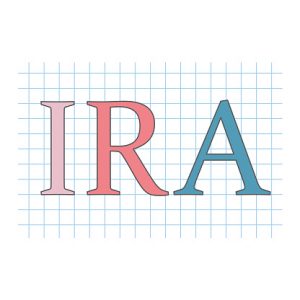
While 401(k)s and Roth IRAs usually come up in conversations about retirement savings, one type of account is often overlooked: the traditional IRA. The traditional IRA is the original retirement account established in the U.S. after the passage of the Employee Retirement Income Act of 1974. The traditional IRA is similar to both the Roth and the 401(k) with some very important differences.
The traditional IRA is tax-advantaged like the 401(k) with no taxes assessed until after the account holder makes a withdrawal. For contributions to traditional IRAs to be tax deductible, the account holder must not have an employer-sponsored plan and must make below a certain salary amount. In 2018, individuals under age 50 can contribute up to $5,500 of earned income and up to $6,500 if they are over 50.
As with 401(k)s, traditional IRAs are subject to required minimum distributions. At the age of 70½, you are legally required to begin withdrawing a minimum amount from your account. This distinguishes traditional IRAs from Roth IRAs, which don’t require minimum distributions at all for the original owner.
Account holders can start withdrawing money as early as age 59½, but any earlier, ineligible withdrawals are subject to a 10% penalty. However, withdrawals may be made under the following circumstances:
- If you become disabled
- If you die before age 59½
- If you use the funds for medical expenses
- If you participate in a SEPP program
- If the funds are used for higher education
- If the funds are used as a result of an IRS levy
- If you are unemployed and you use the funds to pay for medical insurance
- If the amount withdrawn is a return on non-deductible contributions.
Like the Roth IRA, one of the greatest benefits of the traditional IRA is the freedom investors have to pick and choose their own portfolio. If you’re not the type to do your own trading, you can also choose any trustee platform to take care of your portfolio, such as banks, brokerage firms, mutual funds, robo-advisors, etc. And there are a variety of investment options to choose from, since the IRS doesn’t prohibit many investment types.
Plus, if you ever decide taxes are something you just don’t want to worry about when you retire, you can convert your traditional IRA to a Roth IRA. However, you will have to pay tax on the amount that is converted.
For more on savings and the financial services, follow NEXT Financial Group, Inc. on Facebook and LinkedIn and subscribe to this blog at the right-hand side of the page.
https://www.investopedia.com/terms/t/traditionalira.asp
https://en.wikipedia.org/wiki/Traditional_IRA
https://www.irs.gov/retirement-plans/traditional-and-roth-iras






